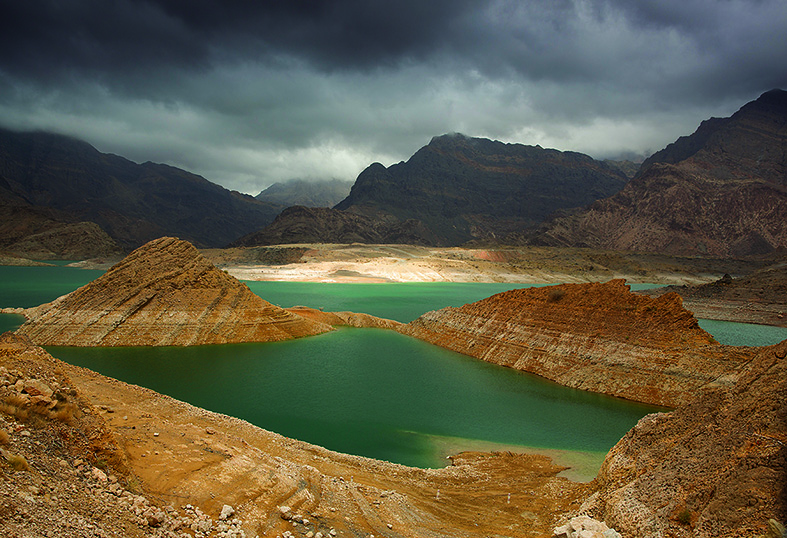
Building capacity of tourism and transport infrastructure is vital for attracting and accommodating a growing number of visitors to Oman. This is all the more important as government machineries are trying to enhance inbound tourist inflow in a move to diversify economy and enhance employment opportunities. Oman’s state-owned tourism development agency – Oman Tourism Development Company (Omran) – has undertaken several major projects, which are a right mix of infrastructure and quality services. Also, the future growth of tourism will be supported by the massive expansion of two international airports – Muscat and Salalah – and additional hotels and resorts, which are coming up in different parts of the country. While Salalah airport opened for passengers recently, Muscat International Airport will receive passengers by early next year. As the tourist arrivals and hotel occupancy rates are showing healthy growth, several leading hotel chains, along with their local partners, are in different stages of building new hotels in the country. At least 16 to 18 new hotels will come up in the next four to five years, taking the total number of rooms to more than 20,000.
Leading the charge
Take the progress of tourism development initiatives last year. Omran was officially appointed as the master developer for Hay Al Irfan urban development. A master plan for the development, which is poised to be the largest mixed-use development ever seen in the Sultanate, is underway and is expected to be ready in the first quarter of 2016. Further, two important resorts – Alila Jabal Akhdar and Atana Musandam – have opened its doors for tourists. Both destinations have attracted a large number of guests from within the region and outside. In yet another development, steady progress has been made on Omran’s highly anticipated joint venture projects including Ras Al Hadd development, Saraya Bandar Jissah and Al Baleed Resort. When completed, these developments will increase the tourism and real estate offerings of the Sultanate and strengthen the sector at large. Agreements have already been signed for building a 296-room Crowne Plaza hotel, which is coming up at the Oman Convention and Exhibition Centre. The new four-star hotel will feature extensive meeting and event facilities and its opening will coincide with the opening of the prestigious convention centre in 2017. The Omran board has also decided to proceed with its plans to build another five-star hotel at Shatti Al Qurum. As part of a well -diversified strategy, the Ministry of Tourism last year conducted a series of road shows across the Gulf region in a move to promote Oman as a short-break tourist destination. The road shows, which comprised of meetings and presentations across the GCC capital cities, helped the ministry to generate more awareness about their offerings to travel agents as well as potential tourists. Many tourists in the region are constantly on the look-out for new yet cost-effective holiday destinations where they can spend quality time relaxing with their family and friends. These road shows conveyed this message while highlighting the hospitality that the country has to offer.
Expanding frontiers
Now Oman is looking beyond its traditional markets. For instance, for the last couple of years, Oman has been focusing on India as the key source market for tourism. Of late, Oman and India have signed a memorandum of understanding (MoU) to boost tourism cooperation. The main objectives of the MoU are to expand bilateral cooperation in the tourism sector, exchange information and data related to tourism, encourage cooperation between tourism stakeholders including hotels and tour operators, and to establish exchange programme for cooperation in human resource development. It is also aimed at investing in tourism and hospitality sectors, exchange visits by tour operators and media for promotion of two-way tourism, to exchange experiences in the areas of promotion, marketing, destination development and management and to participate in travel fairs, exhibitions in each other’s country.
The country boasts of best in class hospitality and tourism infrastructure, including cultural, beach and adventure tour options, excellent year-round weather, luxurious hotels and resorts, international cuisines, and world-class airports offering instant connectivity to the regional cities. Oman offers year-round sunshine that is particularly popular with visitors from Europe seeking a warm winter destination. The Sultanate also holds out great tourism destinations in terms of outstanding natural scenery, 3,165 kilometers of beaches, bays, islands, caves, sand dunes, mountains, plains, deserts and oases. The travel and tourism sector in Oman has experienced year-on-year growth with all indicators pointing to continued growth throughout the Sultanate, both in terms of visitor numbers and positive contributions to gross domestic product (GDP). As the tourists’ arrivals are showing a robust growth in recent years, the most important beneficiaries are hotels. According to the National Centre for Statistics and Information (NCSI), the Sultanate’s star hotels (five- and four-star) registered a 10.3 per cent rise in annual revenues in 2014. Revenues soared to RO165.97 million from RO150.49 million in 2013. The occupancy rate in this segment recorded a 2.7 per cent annual growth, reaching 59.9 per cent from the 2013 figure of 58 per cent, buoyed by a 26 per cent uptick in the number of guests to 785,612 in 2014 from 622,805 in 2013.
Further, the number of guests from African countries registered the highest percentage increase at 59 per cent last year, although the total number of guests remained modest. A total of 5,788 Africans stayed in Oman’s star hotels last year. Europeans formed the largest guest group with 270,567 of them checking in at major hotels, showing a 33 per cent increase from 203,583 recorded in 2013. Omanis were a close second with 230,307 nationals choosing star accommodation last year compared to 191,223 in 2013, which amounted to a rise of 20.4 per cent, according to NCSI. Massive development of transport infrastructure facilities like expansion of airports and a pan-GCC railway network will drive tourism growth in Oman, according to a recent report on future of travel industry in the Gulf region prepared by Amadeus. The expansion of the Muscat airport will definitely encourage and facilitate travel into and out of Oman.
Infrastructure growth
The new Muscat airport is designed to handle 12 million passengers, which can be easily scaled up to 24 million, 36 million, and even 48 million in different phases, depending on the growth in passengers. The plans to develop a pan-GCC railway network will also facilitate travel between member countries in the near future, which is also a big step in encouraging tourism. Another major aspect, which will drive tourism in Oman, is the impact of the country’s youth-driven demographics. Today, nearly 26 per cent of Oman’s population is under 15 years of age. And, as this population becomes tomorrow’s decision makers, traditional travel behaviour is set to witness a transformation and become increasingly personalised.
The report, titled ‘Shaping the future of travel in the GCC: Big travel effects,’ noted that the travel market in Oman is poised for unprecedented growth over the next 15 years. The report also said that the GCC region’s travel market is driven by five major effects – the population effect, the beyond oil effect, the infrastructure effect, the gateway effect (enhanced connectivity) and the information effect.
Building capacity
To report this post you need to login first.






